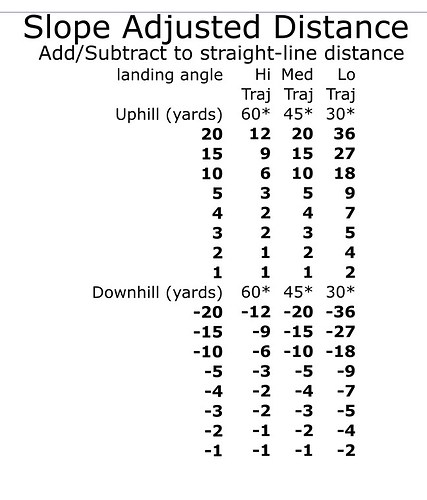I have 3 holes on my home course that require extreme uphill approaches. I have seen a few adjustments recommended:
- Plus one club for every 15 ft of elevation change
- Add “yards of elevation change” to the number
These are 40 - 55 ft elevation changes. They typically happen on approaches of 100, 150 and 200 (different profile of approach club obviously). Currently I am taking +2 clubs on each approach, and it seems to be working ok, but just wondering if there is a way to be more sure of how the elevation change affects the distance, and whether there are any setup adjustments (its an uphill lie as the entire holes run uphill).
Thoughts?
The 200 yard approach is a second on a short par 5. Given the fact that it is basically a cliff in front of the green, I am thinking it may be better to lay up to 75-100 yds and hit a full sw or wedge. The uphill nature of the shot and the lower flight don’t seem to jive. If I come up short, I have to open a 60 degree and take a full swing

 !).
!).